Photography by Rob Christian Crosby
A brief history on one of the world’s oldest and most iconic cocktails and a few recipes inspired by its enduring influence
What is more American than Sunday night football, hamburgers, and the Fourth of July? The Old Fashioned: the quintessential American cocktail that has stood the test of time since its creation in the 1800s, bringing with it an air of mystery and folklore. Its extensive history has led to many variations of the Old Fashioned, accompanied by differing schools of thought on the proper way to serve the cocktail.

The cocktail has been seamlessly woven into American pop culture, especially in the iconic American Television series, Mad Men. After the cocktail’s numerous appearances on the show, New York bartenders noticed a “Mad Men effect” amongst their customers in 2013, where Old Fashioneds were being ordered almost every day. Like Mad Men, the Old Fashioned taps into the innate, almost indescribable, American desire for all things retro, the good old days, if you will, where the shorts were high-waisted, the parental supervision was nonexistent, and stylish cocktails were aplenty.
Although we can’t travel back in time and have a drink with Don Draper, we can continue to sip on Old Fashioneds at wood-paneled bars and cling tightly to the American dream.
We reached out to Jeannie Weaver, owner of Revival, a local downtown hotspot for all things cocktails, to learn more about the timeless drink. Weaver takes us back in time to learn about the mysterious history of the cocktail, her opinion on the proper way to serve an Old Fashioned, and a few recipes that have come out of the modern cocktail revival.
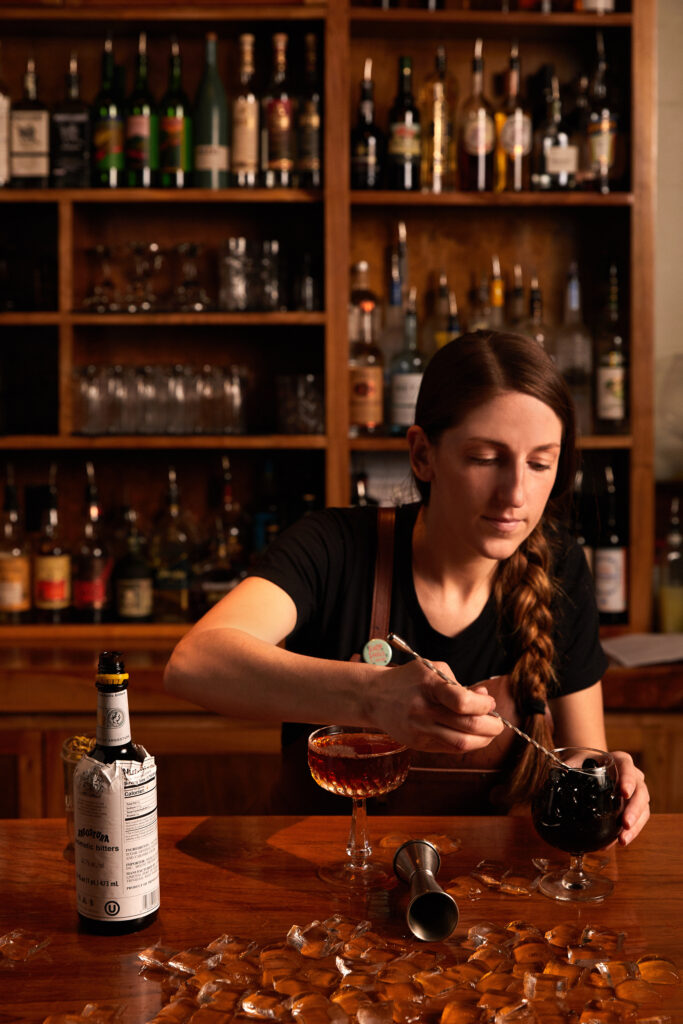
The Lakelander: What is the history behind the Old Fashioned, and why do you think it has stood the test of time?
Jeannie Weaver: Like any classic, the history of the Old Fashioned has multiple origin stories. They range from it being created at the famous Pendennis Club in Louisville and the Waldorf-Astoria Hotel in New York City. I pride myself on my cocktail book collection, and after consulting with some of the books, I pieced together what I believe to be the closest version of the truth. The first mention of the Whiskey Cocktail, with specific clarification to the ingredients that modeled what we know as the “Old Fashioned,” was in 1806 in the Balance and Columbian Repository. The Whiskey Cocktail, as it was defined, was listed as “a stimulating liquor, composed of spirits of any kind, sugar, water, and bitters.” By 1888, it had shown up in multiple cocktail publications, like Theodore Proulx’s The Bartender’s Manual, although in 1862 it was already labeled as an “old fashioned.” With that being said, variations of the drink go all the way back to 1833 with either brandy, rum, or genever as the base spirit because whiskey was considered too harsh.
I believe it has stood the test of time due to its simplicity. The drink has three ingredients and is easy to remember. Usually, it’s one of the first drinks you learn as a bartender, considering historically this was one of the top cocktails ordered at most institutions. With the growing bourbon movement over the past few years, the Old Fashioned has become fashionable again as the gateway drink for those who are interested in trying bourbon for the first time. At Revival, it has become the backbone of our business. From the time we’ve opened, it has consistently been one of our top-three sellers. We hold a high level of pride in the process of making it, and people trust us to make a proper one.
TL: What is the proper way to serve an Old Fashioned?
JW: The Old Fashioned is controversial because there are two distinct sides: those who muddle the fruit and those who don’t. I fall in the latter category. I believe the proper way to serve an Old Fashioned is to keep it as simple as possible (spirit, bitters, sugar stirred not muddled, an orange peel expressed and used as a garnish, and the drink is finally finished with a Luxardo cherry). The drink is meant to be very spirit-forward which is why I skip the muddle and minimize the sugar. I believe you should be able to pick up the flavor profile of the chosen spirit (whiskey/bourbon/rye) without having to decipher whether it’s the sugar or fruit causing the taste.
Traditionally, it is served with a sugar cube muddled. At Revival, we stray away from that for two reasons. First, plain granulated sugar has been bleached of all its flavor and complexity and doesn’t add anything other than a mild sweetness. Second, we have our own syrup that was crafted to specifically fill the gaps in the drink. If you choose a bourbon with a really high proof, it will soften the burn without taking away from the flavor profile. If you’re adding something to the cocktail, it should either enhance or add some sort of complexity to it without taking away from the spirit itself. We tend to lean towards bourbon or rye with this classic recipe.
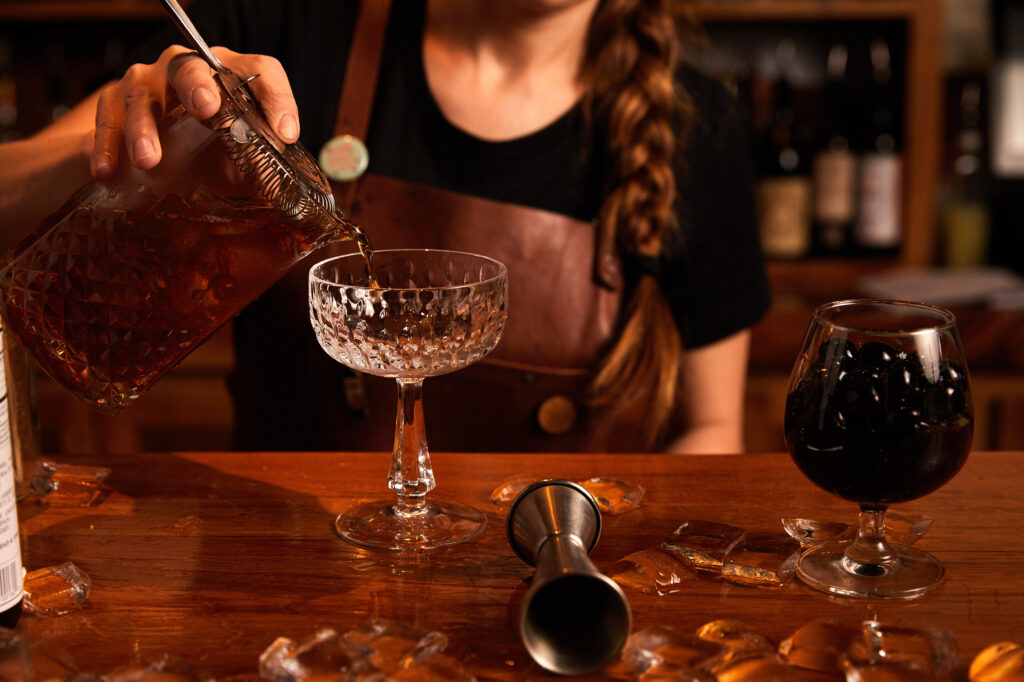
TL: What is the best way to order an Old Fashioned for an entry-level cocktail consumer?
JW: I love this question because having an open dialogue with your bartender lends to a more enjoyable and memorable experience for both of you. With any drink, I’ll ask what spirit they normally choose and how they prefer it (sweet, sour, salty, bitter, or umami) to gauge their palate. If that isn’t helpful, I’ll ask what kinds of food they like. With that information, I can usually pinpoint a few drinks that they would potentially enjoy. In the case of the Old Fashioned, most people just order the traditional, which prompts us to clarify what types of Old Fashioned they’ve had before. If they haven’t had one before, I usually steer them towards bourbon, or my favorite, rye, just to be safe. If they have had an Old Fashioned before, I’ll point them to our menu which has every Old Fashioned possible (bourbon, rye, gin, rum, tequila, mezcal — fat-washed or chai-infused).
TL: What is your personal favorite twist on the Old Fashioned?
JW: My personal favorite twist on the Old Fashioned is our Gin Old Fashioned. We use Waterloo Barrel-Aged Gin with a spiced apple bitters and cinnamon syrup which gives it a warm apple-pie taste. When most people hear “gin,” they shy away from it. This particular gin has milder notes of juniper and has converted even our hardcore bourbon Old Fashioned drinkers. Cinnamon and apple flavorings are as American as it gets, and the Old Fashioned is a drink most people feel comfortable with, so it allows them to step outside their comfort zone and try something new without being too risky.
Recipes
[accordion]
[item title=”Sin Cyn”]
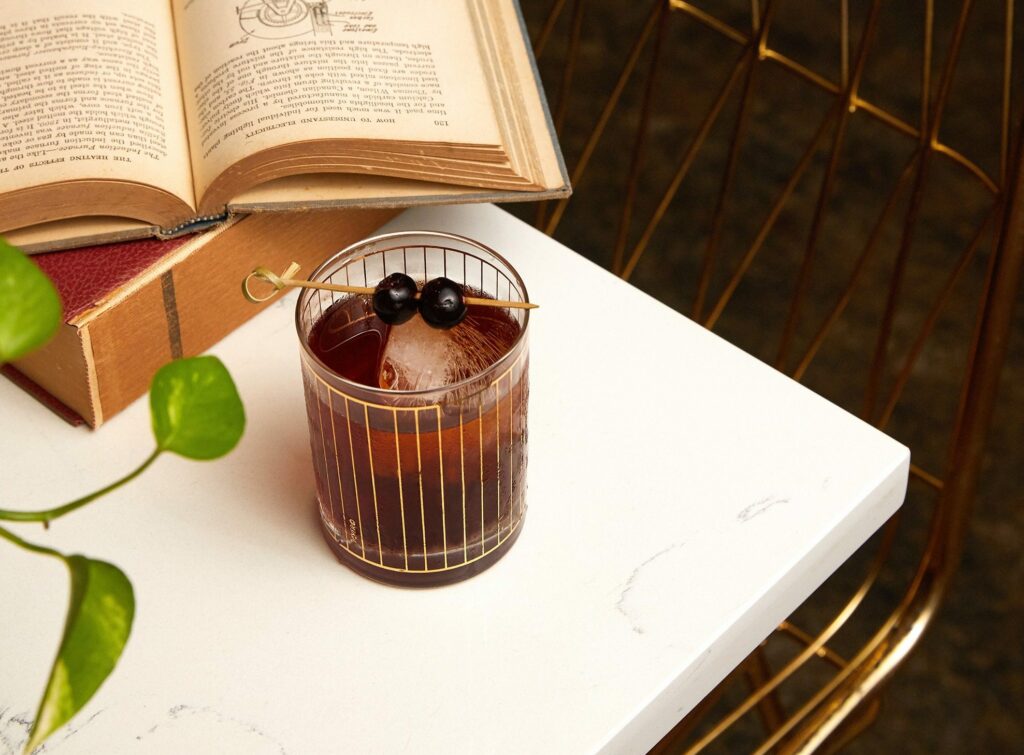
1 ounce cynar
1 ounce sweet vermouth
1 ounce Scotch whiskey
1 orange peel
The “Cyn” refers to cynar, an Italian bitter made from artichokes which falls into the amaro category. This calls for 1 ounce each of cynar, sweet vermouth, and your favorite Scotch whiskey. Pour ingredients into an ice-filled mixing glass and stir gently until mixed. Strain ingredients over a King Cube into a double rocks glass. Garnish with an orange twist before serving.
[/item]
[item title=”Rob Roy, Mezcal Last Word, Negroni”]
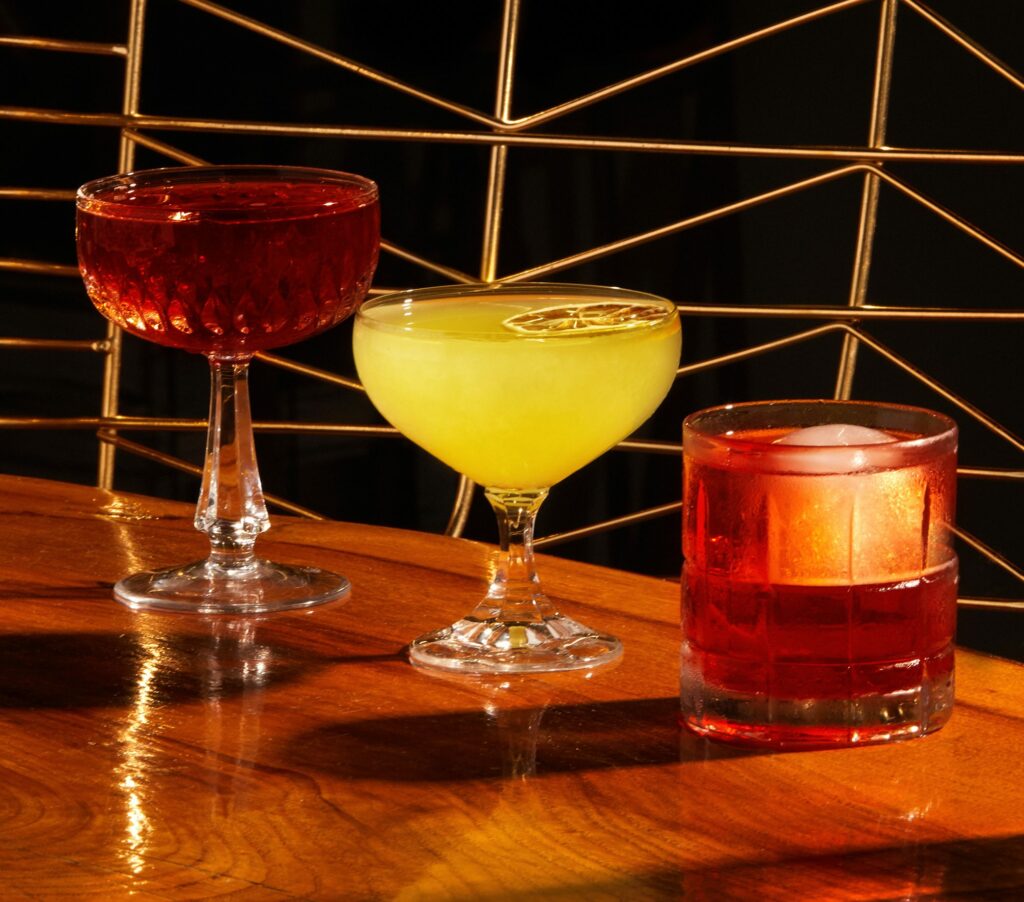
(Pictured Left to Right)
ROB ROY
1.5 ounces Scotch whisky
1.5 ounces sweet vermouth
2 dashes of Angostura bitters
Luxardo cherries
In an ice-filled mixing glass, combine the Scotch whiskey, sweet vermouth, and
Angostura bitters. Stir well and strain into a Nick and Nora glass. Garnish with Luxardo cherries.
Mezcal Last Word
3/4 ounce mezcal
3/4 ounce Green Chartreuse
3/4 ounce maraschino liqueur
1 lime
With the Negroni being the number- one “equal-parts cocktail,” the Last Word easily takes the second spot. This is a reimagined expression of the cocktail which is usually made with
gin. In an ice-filled cocktail shaker, combine 3/4 ounce each of mezcal, Green Chartreuse, maraschino liqueur, and fresh lime juice. Shake well and strain into a coupe glass. Garnish with a dehydrated lime wheel.
NEGRONI
1 ounce gin
1 ounce campari
1 ounce sweet vermouth
1 orange peel
Pour ingredients into a mixing glass and stir well. Strain into a double rocks glass over a King cube. Grab an orange and peel off the skin, removing it with as little of the pith as possible. Squeeze the peel over the drink which expresses the oils and releases the aromatics from the orange.
[/item]
[item title=”Boulevardier”]
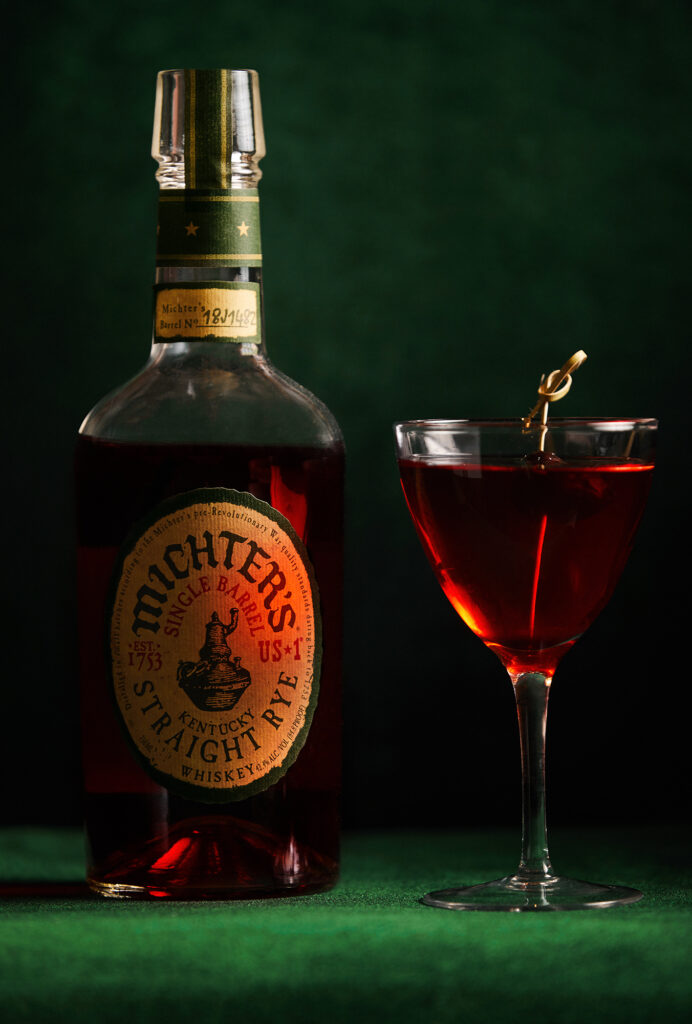
1 ounce rye whiskey
1 ounce campari
1 ounce sweet vermouth
1 Luxardo cherry
Another famous Equal Parts Cocktail, with a modification. This typically calls for bourbon, but we exchange the bourbon for rye to add some spice. Pour 1 ounce each of rye whiskey,
campari, and sweet vermouth into a mixing glass and stir until combined. Strain into a chilled Nick and Nora glass with a Luxardo cherry added as a garnish.
[/item]
[/accordion]
